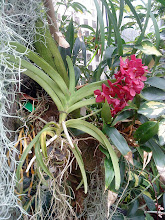
At the moment, I'm battling to meet a deadline but just to jot down a few things – gardengoing experiences of recent weeks while they’re fresh. So, just a few outlines for now, though I can always go back and add – or cut – a bit later. This is a kaleidoscopic blog – posts change when you next tune in.
First, as promised, the link between Beatons Wood in Arlington, near Firle Beacon, Sussex and Chelsea Flower Show.
I’d followed the shorter route around the wood - and felt a bit underwhelmed as there hadn’t been many surprises. Then, as mentioned, I went on the walk out through the fields and along the river before returning to the wood. By chance, I found a new route into the heart of the wood, where the canopy allowed just a few glints of sunlight through and the paths were narrow and criss-crossing and there were a few moments where you could feel a bit lost – like in a maze. I kept taking the routes where there was no one ahead so as to intensify that satisfying ‘I may never make it out of here’ feeling and, alone, walking along a path that hung on to the side of a little hill, and always looking for fresh bluebells but finding none – as described earlier, they’d all gone over, though the scent was heavenly sweet – I was electrified by a neon purple-blue little clump of flowers, all the brighter for being in dim, dappled sunlight. This being a public wood, there were labels here and there and, to my surprise, I read that these shady flowers which looked like bluebells but which weren’t – too frilly, a bit like little daffodils, and intensely violet rather than blue – were in fact orchids. And purple and blue, as I’d discovered watching the BBC programmes on Chelsea, are the colours in the spectrum most attractive to bees.
Now for the link to Chelsea. After seeing all the gardens I’d wanted to see and, fortified with a glass of Pimms, I headed for the floral pavilion. On my map, I’d circled a few stands selected from the BBC's coverage of the show – including the display for The Orchid Society of Great Britain. I hadn’t looked for orchids at Chelsea in previous years, but this year I’d heard that the Orchid Society had invited groups from all over the world to send in their plants – and at the top of the display, fittingly, were plants from the Himalayas; at the base were orchids that spent their lives half-submerged in a South American lake. The helpful committee member on the stand explained that orchids aren’t the difficult plants people imagine them to be – most only need watering once a week, except for one-offs like that aquatic South American variety. It pays to know what kind of orchid you’ve got, obviously.
I mentioned that I'd recently become more interested in orchids and there seemed to be a few signs that it was time to look into getting one. One of my father’s friends is a mountaineer and an orchid-hunter: a great combination, if you like orchids. Interestingly, he hadn’t been interested in going on a bluebell walk because he thought there wouldn’t be any wild orchids there. Then I mentioned to the committee member that I’d seen orchids in the bluebell wood and had at first mistaken them for bluebells. They’re mimicking bluebells, he pointed out, so as to attract bees. Orchids are known for this kind of subterfuge, apparently – the chameleons of the plant world.
By the end of the conversation, I’d joined the Society – a bargain at £10, including a free book on orchid cultivation worth a fiver, plus back copies of the journal and a workshop for beginners. I also went away with a few tips – the name of an orchids nursery in Sussex and a recommendation to check out another orchids display in the pavilion, a nursery in Jersey, where the orchids were as delicate as silk and the patterns like miniature watercolours.
(PS Thanks to M for 24 H G P . . .)

really interesting and insightful!! very much enjoyed reading this, look forward to more xxxxx
ReplyDeleteThanks, Laura - glad you liked this. Next routine on pavilions coming soon (the Serpentine and the Collector Earl's Garden at Arundel Castle plus a few mentions of European garden houses from the middle ages onwards).
ReplyDelete